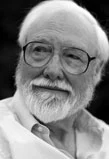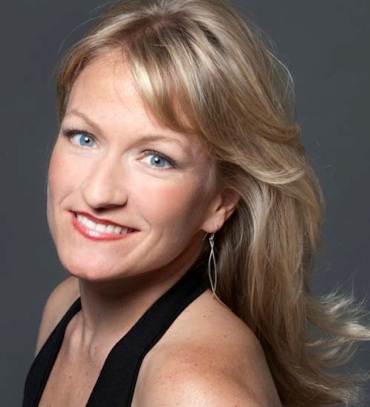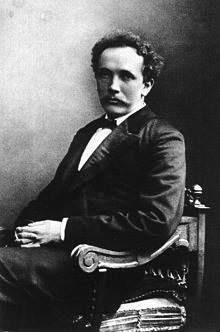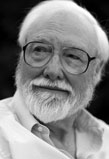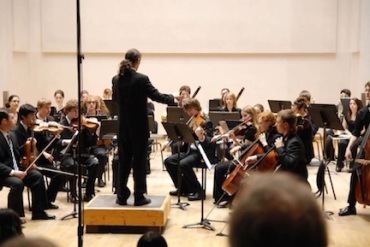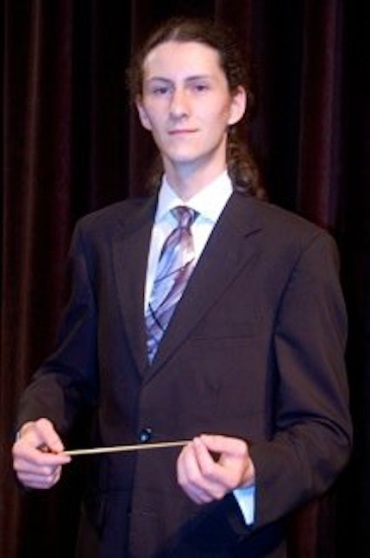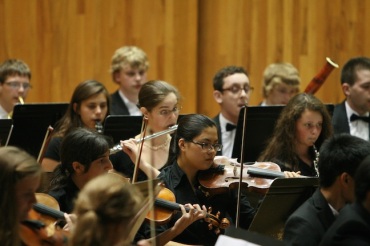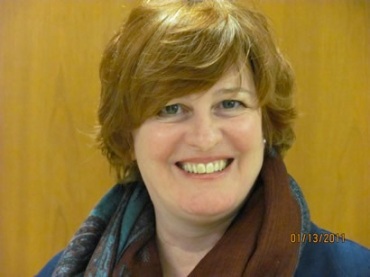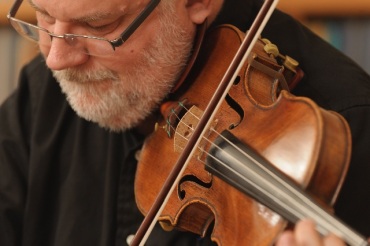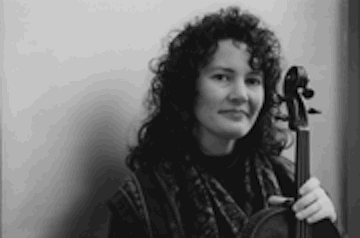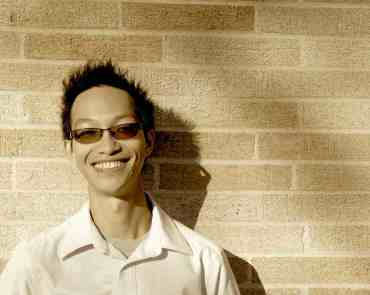The Well-Tempered Ear
Classical music: The Token Creek Chamber Music Festival provides a thought-provoking and ear-delighting look into the intersection of Shakespeare’s plays and classical music.
Leave a Comment
By Jacob Stockinger
Here is a special posting, a review written by frequent guest critic and writer for this blog, John W. Barker. Barker (below) is an emeritus professor of Medieval history at the University of Wisconsin-Madison. He also is a well-known classical music critic who writes for Isthmus and the American Record Guide, and who hosts an early music show every other Sunday morning on WORT 88.9 FM. He serves on the Board of Advisors for the Madison Early Music Festival and frequently gives pre-concert lectures in Madison.
By John W. Barker
The Token Creek Chamber Music Festival has long-established a reputation for unusual programming, combining seemingly distinct genres, and exploring rare or unconventional material within them.
This season, the Festival seems to have become even more adventurous. There is the usual balancing of jazz and classical music, with more investigation of improvisatory techniques. The tiptoe into Shakespeare (below) made last year has this time has been expanded into a full and quite adventurous program, called “Shakespeare: The Bard in Songs and Scenes.”
The program opened with the premiere of a new composition by John Harbison (below), the co-director of the Festival who is also an award-winning composer. Called “Invention on a Theme by Shakespeare,” it takes as its “theme” a sequence of six solmization pitches (notes in a scale that are equated to syllables) talked of by a comic character in “Love’s Labours Lost” — a piece of music by the poet, if you will. Written for solo cello with string quartet, it begins with a long solo monologue and then develops into a sequence of more animated ensemble episodes.
Thereafter, the program developed into a series of nine sets, each built around one of the plays. In each case, a passage from the given play was recited by actor Allison Schaffer, while the songs around it were sung by soprano Mary Mackenzie), with pianist Molly Morkoski (below) accompanying stylishly.
The pattern worked very well, with song composers ranging from Thomas Morley, a contemporary and friend of Shakespeare, to John Harbison himself, our contemporary and friend.
What was most engaging was the frequent pairing of settings by different composers of the same texts. This practice was brought to a peak by the presentation of three of the song texts from “The Tempest,” first as set by Henry Purcell (2) and Pelham Humfrey (1), and then all by Michael Tippett. It provided fascinating insights into the varied possibilities and aesthetics of musical word treatment.
For me, though, at least as fascinating was the unit devoted to “Hamlet,” and to the sad character Ophelia. Framing Queen Gertrude’s famous description of Ophelia’s death were two complete song cycles, each setting the words of the demented songs that the poor girl sings in her madness.
One cycle, using five of those song cycles was a rarely heard and posthumously published set by Johannes Brahms (below top). The other, using only three of the texts, was a set published as his Op. 67 by Richard Strauss (below bottom). (And not by Johann Strauss, as the program erroneously claimed, and as carefully corrected by Harbison in his astute spoken commentary.)
These texts were set by each composer in German translations, which itself highlighted the Bard’s important cultural outreach beyond the English language. (And that point was furthered by inclusion of two Shakespeare songs by Schubert, in German; as well as one by Haydn, if in English.) The Brahms settings were in a direct and rather simple style, perhaps reflecting his extensive activity in treating German folksong.
By contrast, Strauss used them to venture into almost experimental writing, in treatments that emphasized dramatic and powerfully tragic sensibilities. I wondered when anyone else would have the enterprise to put these two cycles together for comparison.
It was a measure of their total commitment that both actress and singer delivered their work totally from memory.
Allison Schaffer (below) is just beginning a career in theater, but she demonstrates a firm sense of textual integrity, vocal clarity, and stage instincts. She will be a local product to watch for.
Mary Mackenzie (below) has a full, ripe soprano voice of great power and beauty. She put it to use, with effective utilization of facial expression, body movement, and even gestures, to make each song an individual piece, with its own distinct mood. This is a superb artist of whom I want to hear more.
The usual printed program was supplemented this time by a set of notes by Harbison himself, giving a concise and helpful roadmap through the plays and the selections offered.
There was, alas, one fly in the ointment. Each of the spoken selections was “accompanied” by improvisations for violin and cello devised by guest composer and violinist Andrew Waggoner (below).
Everyone I spoke to afterwards agreed with me that these improvisations were intrusive, distracting, and often downright unpleasant–certainly a serious injustice to Ms. Schaffer’s work. I know that Harbison himself is most interested in the art of improvisation, and it deserves its space; but this was not the space into which to impose it.
 That was the one miscalculation in an otherwise splendidly artistic and thought-provoking presentation.
That was the one miscalculation in an otherwise splendidly artistic and thought-provoking presentation.
The Festival concludes on this Saturday, Aug. 31, at 8 p.m. and on Sunday, Sept. 1, at 4 p.m. with a program called ‘The Old and the Unfamiliar,” which features unfinished Mozart works completed by Harvard University scholar and pianist Robert Levin and by festival co-director and composer John Harbison. As always, it will take place in “The Barn” (below) off Highway 19.
For more information and tickets, call (608) 241-2525 or visit: http://tokencreekfestival.org
Tags: American Record Guide, Andrew Waggoner, Early music, Franz Schubert, German, Henry Purcell, improvisation, Jacob Stockinger, Johannes Brahms, John Barker, John Harbison, Mary Mackenzie, Michael Tippett, Pelham Humfrey, Richard Strauss, Robert Levin, Shakespeare, Token Creek Chamber Music Festival, University of Wisconsin–Madison, William Shakespeare, Wolfgang Amadeus Mozart
Classical music: Mikko Utevsky and the Madison Youth Area Chamber Orchestra (MAYCO) show a growing maturity of technique and interpretation in music by Mozart, Copland and Prokofiev.
2 Comments
By Jacob Stockinger
Here is a special posting, a review written by frequent guest critic and writer for this blog, John W. Barker. Barker (below) is an emeritus professor of Medieval history at the University of Wisconsin-Madison. He also is a well-known classical music critic who writes for Isthmus and the American Record Guide, and who hosts an early music show every other Sunday morning on WORT 88.9 FM. He serves on the Board of Advisors for the Madison Early Music Festival and frequently gives pre-concert lectures in Madison.
By John W. Barker
As a point of context, I note that on Thursday evening I returned from New England after attending the Boston Early Music Festival, where world-class artistry so saturates the air that one can almost cut it (with a bow or a reed). I arrived just in time for the weekend in Madison.
To some that might sound like a descent from Parnassus into the boondocks. But it is hardly so at all. I returned to two successive evenings of concerts that could make any community proud – the Madison Area Youth Chamber Orchestra (below, in Mills Hall) on Friday night and the Bach Dancing and Dynamite Society on Saturday night.
The concert on Friday evening, June 21, had particular significance as it symbolized one of the things that makes Madison so special: its capacity for nurturing young talent.
The proof of that was the first of the two concerts being given this summer by the Madison Area Youth Chamber Orchestra (MAYCO) in Music Hall on the University of Wisconsin-Madison campus. This ensemble, now in its third performing season, is the creation of the remarkable Mikko Utevsky (below), who has just completed his freshman year studying viola and conducting at the UW School of Music.
(For background here is a link to a Q&A Utevsky did for this blog: https://welltempered.wordpress.com/2013/06/20/classical-music-qa-conductor-violist-mikko-utevsky-discusses-his-first-year-at-the-university-of-wisconsin-madison-school-of-music-and-the-lessons-he-brings-to-the-concert-friday-night-by-the-ma/)
Already a seasoned player, Utevsky is also a conductor of growing experience. And he is a musician of enterprise, having drawn together young music students of high school and college age to produce a working orchestra.
Thirty-two players (below) were his resource this time, and they showed a seriousness of commitment that was palpable. There were rough patches of playing, for sure, but Utevsky has been able, in a short time with limited rehearsal opportunities, to forge them into a thoroughly credible, and creditable, ensemble.
His program this time was both intelligent and (deliberately, I suspect) challenging.
He opened with the suite that Aaron Copland drew from his film score for “Our Town.” It is music that sounds so soothing and relaxed, but it demands great suavity of ensemble. This was managed well, with some particularly fine work from the woodwinds.
Following that came Serge Prokofiev’s “Peter and the Wolf.” This is so easy and entertaining to listen to that one assumes that it is easy and just fun to play. But the composer not only has an ear for orchestral colors but also for very tricky instrumental techniques.
Once again, the woodwind players achieved high standards, but the full group was alert to what was asked of them, under the steady and intelligent control provided by the conductor. The narration was provided, in a warm story-telling style, by Lori Skelton (below) of Wisconsin Public Radio.
Following the intermission came the program’s crown jewel, Mozart’s “Sinfonia concertante” in E-flat for violin and viola, K. 364. This is arguably one of the composer’s greatest concerted works, an absolute masterpiece of invention and expression, especially in its moving slow movement.
In this work, the orchestra sounded best prepared, and it had as soloists two local stalwart professionals: violinist Eugene Purdue (below top) and violist Diedre Buckley Below bottom, in a photo by Katrin Talbot). For all involved, performers and audience, this was an artistically satisfying rendition of great music.
In all, this concert was a renewed tribute to Utevsky, as conductor and as ensemble builder. He is clearly a musician with a future and certainly what Madison can be so proud of.
The second MAYCO concert will be on Friday, Aug. 9, at 7:30 p.m. in Music Hall. It will feature music by those great masters Beethoven, Haydn, and Jerry Hui (below) — oh yes, he’s another Madison product to be proud of!
- May 2024
- April 2024
- March 2024
- February 2024
- January 2024
- December 2023
- November 2023
- October 2023
- September 2023
- August 2023
- July 2023
- June 2023
- May 2023
- April 2023
- March 2023
- February 2023
- January 2023
- December 2022
- October 2022
- September 2022
- June 2022
- May 2022
- April 2022
- March 2022
- July 2021
- June 2021
- May 2021
- April 2021
- March 2021
- February 2021
- January 2021
- December 2020
- November 2020
- October 2020
- September 2020
- August 2020
- July 2020
- June 2020
- May 2020
- April 2020
- March 2020
- February 2020
- January 2020
- December 2019
- November 2019
- October 2019
- September 2019
- August 2019
- July 2019
- June 2019
- May 2019
- April 2019
- March 2019
- February 2019
- January 2019
- December 2018
- November 2018
- October 2018
- September 2018
- August 2018
- July 2018
- June 2018
- May 2018
- April 2018
- March 2018
- February 2018
- January 2018
- December 2017
- November 2017
- October 2017
- September 2017
- August 2017
- July 2017
- June 2017
- May 2017
- April 2017
- March 2017
- February 2017
- January 2017
- December 2016
- November 2016
- October 2016
- September 2016
- August 2016
- July 2016
- June 2016
- May 2016
- April 2016
- March 2016
- February 2016
- January 2016
- December 2015
- November 2015
- October 2015
- September 2015
- August 2015
- July 2015
- June 2015
- May 2015
- April 2015
- March 2015
- February 2015
- January 2015
- December 2014
- November 2014
- October 2014
- September 2014
- August 2014
- July 2014
- June 2014
- May 2014
- April 2014
- March 2014
- February 2014
- January 2014
- December 2013
- November 2013
- October 2013
- September 2013
- August 2013
- July 2013
- June 2013
- May 2013
- April 2013
- March 2013
- February 2013
- January 2013
- December 2012
- November 2012
- October 2012
- September 2012
- August 2012
- July 2012
- June 2012
- May 2012
- April 2012
- March 2012
- February 2012
- January 2012
- December 2011
- November 2011
- October 2011
- September 2011
- August 2011
- July 2011
- June 2011
- May 2011
- April 2011
- March 2011
- February 2011
- January 2011
- December 2010
- November 2010
- October 2010
- September 2010
- August 2010
- July 2010
- June 2010
- May 2010
- April 2010
- March 2010
- February 2010
- January 2010
- December 2009
- November 2009
- October 2009
- September 2009
- August 2009
Archives
- 2,491,586 hits
Blog Stats
Recent Comments
| Brian Jefferies on Classical music: A major reass… | |
| welltemperedear on What made Beethoven sick and… | |
| rlhess5d5b7e5dff on What made Beethoven sick and… | |
| welltemperedear on Beethoven’s Ninth turns 200… | |
| Robert Graebner on Beethoven’s Ninth turns 200… |
Tags
#BlogPost #BlogPosting #ChamberMusic #FacebookPost #FacebookPosting #MeadWitterSchoolofMusic #TheEar #UniversityofWisconsin-Madison #YouTubevideo Arts audience Bach Baroque Beethoven blog Cello Chamber music choral music Classical music Compact Disc composer Concert concerto conductor Early music Facebook forward Franz Schubert George Frideric Handel Jacob Stockinger Johannes Brahms Johann Sebastian Bach John DeMain like link Ludwig van Beethoven Madison Madison Opera Madison Symphony Orchestra Mead Witter School of Music Mozart Music New Music New York City NPR opera Orchestra Overture Center performer Pianist Piano post posting program share singer Sonata song soprano String quartet Student symphony tag The Ear United States University of Wisconsin-Madison School of Music University of Wisconsin–Madison Viola Violin vocal music Wisconsin Wisconsin Chamber Orchestra wisconsin public radio Wolfgang Amadeus Mozart YouTube